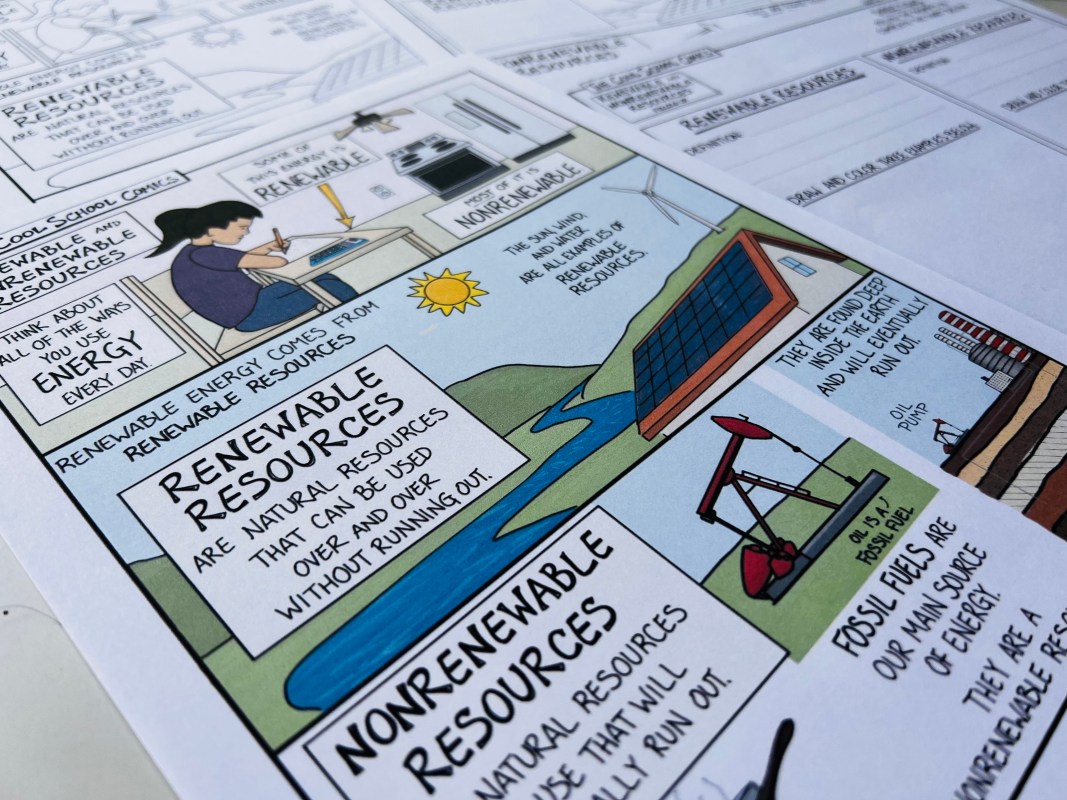Blog
What Are Renewable and Nonrenewable Resources? For Kids
Lesson Plan
Renewable and Nonrenewable Resources For Kids
Renewable and nonrenewable resources is a big aspect of many fourth-grade science classrooms. Students are expected to not only grasp the concept, but also explain how these energy resources might have an impact on the environment.
While it may seem like common sense because we use energy every day, many students need a little extra help in differentiating the two types of energy. By incorporating comics into the lesson plan, your students will engage in reading and the ENJOY the learning process.


Renewable vs Nonrenewable
Think of renewable energy as the type of energy that comes from things that we can easily get more of, like sunshine and wind. Nonrenewable energy is energy that comes from things that we can’t easily make more of, and once we use them up, they’re gone.
The Renewable and Nonrenewable Resources Lesson Plan presents these two types of energy in a format that will rope your readers in.
Advantage and Disadvantages
Both renewable and nonrenewable energy sources have many advantages, but they also come with some disadvantages.
Renewable energy resources are better for the environment, inexhaustible, and reduce energy costs over time. However, the initial setup of these resources can be very expensive and weather conditions can affect the efficiency of the resource.
Nonrenewable energy resources are reliable and the infrastructure for using these resources is already in existence. They are relatively low in cost, but the environmental cost can be quite high.
Nonrenewable resources are finite, and they will eventually run out. The extraction of nonrenewable resources can lead to habitat destruction, water pollution, and other environmental damage. Oil spills and coal mining accidents, for example, can have devastating consequences.
The Renewable and Nonrenewable Resources Lesson Plan covers the disadvantages of fossil fuels in an approachable comic format.


Hands-on Learning Activity
The best way to solidify an understanding of the disadvantages of fossil fuels (nonrenewable resources) is to get involved in the learning process. This means students need to take a hands-on approach to learning the content.
This lesson plan includes an Oil Spill Clean-up Lab with instructions presented in. a visual format. This makes the activity more accessible to students who struggle to read or resist reading directions. Each step includes both words and illustrations. This is also beneficial to students who are learning the English language (ESL) and students with dyslexia.
Activity Instructions
With the help of a few everyday household items, you can create a mini oil spill for your students. They will be tasked with cleaning up the oil using items such as cotton balls, paper towels, spoons, pipette droppers, or whatever else you/they come up with.
Students will be guided through each step of the lab and prompted to make predictions and answer questions along the way. The questions in the activity are crafted to align with NGSS standards keeping students on track during the process.
